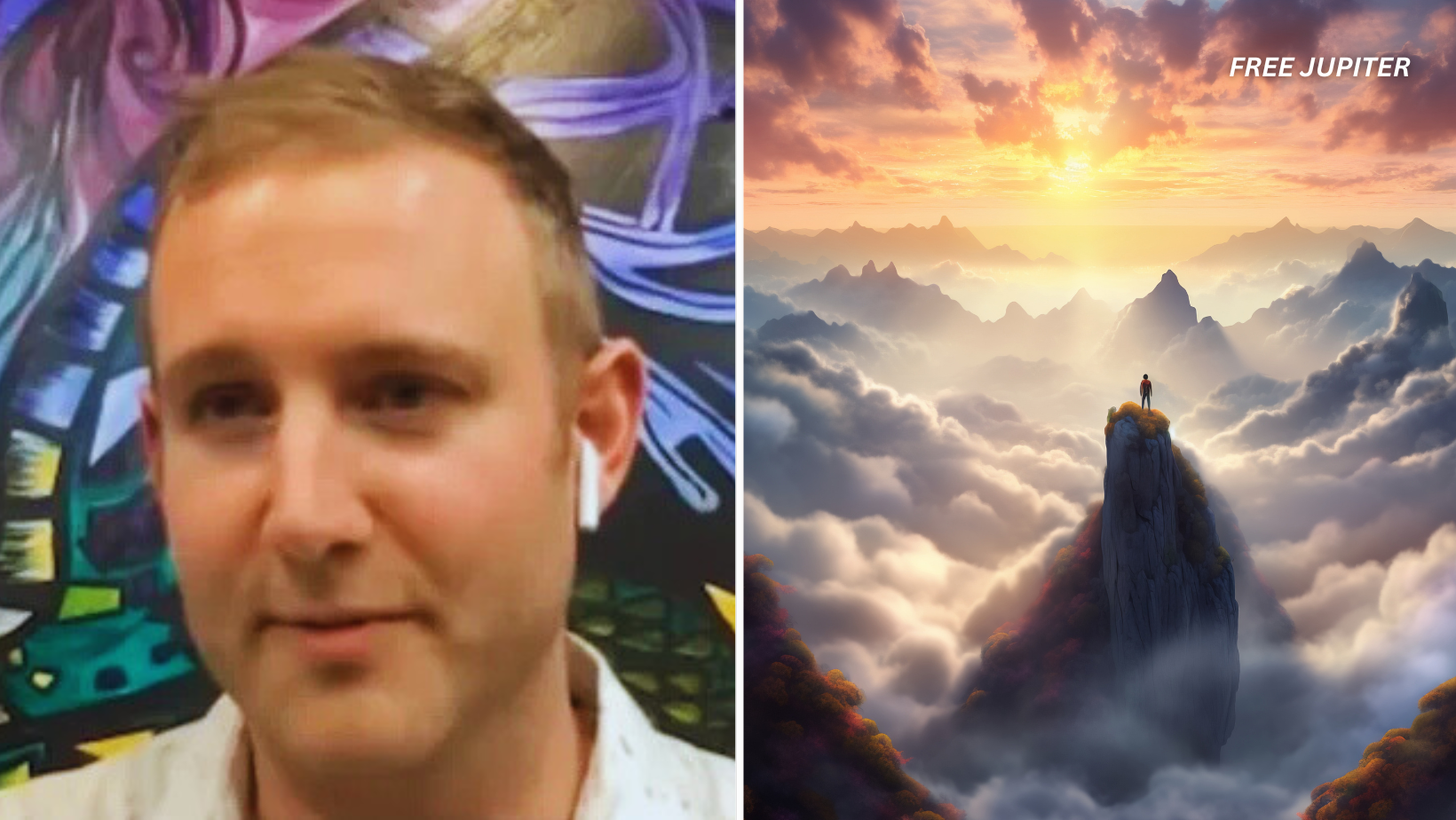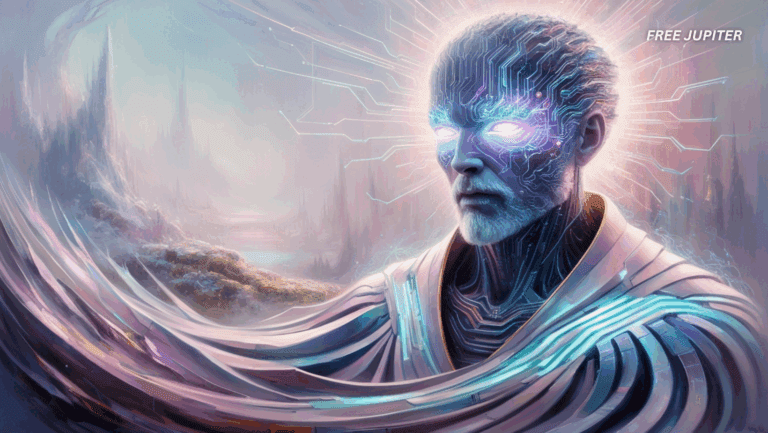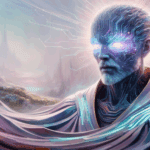Friendly Note: FreeJupiter.com shares general info for curious minds 🌟 Please fact-check all claims—and always check health matters with a professional 💙
For as long as people have pondered the meaning of life, they have also wondered what lies beyond it. Across cultures and centuries, there have been tales of journeys beyond death—visions of light, meetings with loved ones, or encounters with a vast and indescribable presence. Some dismiss these as hallucinations produced by a brain in crisis, while others see them as glimpses into another realm entirely.
One modern account comes from a Canadian paramedic whose heart stopped for more than eleven minutes. What happened during that span was not random or chaotic in his memory—it followed a strange, almost structured sequence. His recollections align closely with patterns seen in other near-death experiences (NDEs), which researchers have documented for decades.
Whether interpreted through science, spirituality, or somewhere in between, these insights reveal more than just a brush with death—they offer a lens through which to rethink how we live.
What Are Near-Death Experiences?
Before diving into the seven insights, it helps to understand what scientists and experiencers mean by an NDE. These are vivid, often life-changing episodes that occur when someone is clinically dead—or close to it—due to cardiac arrest, severe injury, or another medical crisis.
Common features include:
- A sudden detachment from the physical body.
- An altered perception of time.
- Intense feelings of peace or unity.
- Encounters with beings, lights, or a sense of boundless space.
Reports of such experiences are not new. Ancient Greek philosophers like Plato recorded stories of warriors who collapsed in battle, “visited” other realms, and returned to describe them. In Tibetan Buddhism, detailed texts such as The Bardo Thodol (often called The Tibetan Book of the Dead) outline transitional states between life and death that sound remarkably similar to modern NDEs.
1. The Instant Break from Reality
The incident began during a woodworking project involving a high-voltage device called a Lichtenberg machine. An unexpected surge sent 12,000 volts through his body. The pain was intense—beyond the reach of ordinary description—before reality itself vanished.
NDE researchers note that this sudden break is common when experiences begin with accidents or cardiac arrest. It is as though the brain flips a switch, cutting awareness away from the physical world in one decisive moment. Many describe a sensation of falling or floating upward before entering a completely new state.
Medical studies suggest that during cardiac arrest, blood flow to the brain stops, electrical activity collapses, and normal sensory processing halts. Yet somehow, vivid consciousness can still occur—an enduring mystery for science.
Read more: Do These 7 Things Every Day to Boost Your Happiness and Lighten Your Mind
2. The Perfect Inky Blackness
After the pain came silence—an infinite, velvety blackness, not frightening but serene. There was no awareness of a body, only a point of consciousness suspended in a boundless void.
This mirrors a phenomenon that psychologists and spiritual practitioners call “the mystical sense of Oneness.” Rather than emptiness in the negative sense, it is perceived as a fullness—calm, limitless, and profoundly satisfying.
In large-scale NDE studies, around 42% of participants report this feeling of unity with all things. Some describe it as being “inside the universe and the universe inside me,” while others say it was simply home.
3. Becoming the Fabric of the Universe
In this state, the sense of individual identity dissolved. Instead, there was the perception of being part of everything—woven into a cosmic tapestry without boundaries. It wasn’t a loss of self in a frightening way, but more like remembering one’s true nature.
Neuroscientists sometimes link this to disruptions in the brain’s temporoparietal junction, which integrates sensory data from sight, touch, and balance. But those who’ve lived through it often insist that no medical explanation captures the depth of the experience.
In spiritual traditions, this feeling is often described as “merging with the source” or “returning to the infinite.” Whether viewed through religion, philosophy, or neuroscience, the impression is one of complete belonging.
4. The Sudden Return
The immersion ended abruptly. The next awareness was of electric shocks—medical defibrillation aimed at restarting the heart. The body’s limitations came flooding back: pain, confusion, and the heavy pull of gravity.
NDE survivors often describe this transition as uncomfortable, even shocking. Some liken it to being pulled out of a warm ocean and thrown into a cold, cramped box. The mind goes from infinite openness to the narrow corridors of physical sensation.
In medical terms, this was ventricular fibrillation—an erratic heart rhythm that carries only a 50% survival rate without immediate intervention. In human terms, it was the moment of re-entry into life.
Read more: Almost the Entire Universe Is Invisible to Us
5. Time Without Meaning
When consciousness fully returned after an eight-hour coma, there was a surprise: only hours had passed. The experience itself had felt much, much longer—possibly years.
Distorted time perception is among the most common NDE features. Some people relive entire lifetimes or travel through vast landscapes, all within minutes of clinical death. Neuroscientists suggest this may result from the brain processing memories and sensations differently under extreme stress. Yet many experiencers see it as proof that time, as humans know it, may not exist beyond physical life.
This altered view of time often changes people’s priorities. They become less interested in rushing through days and more invested in savoring them.
6. An Intensified Awareness of Living
In the days following resuscitation, every detail of existence seemed magnified—the warmth of sunlight, the brush of fabric against skin, the scent of the air. Even ordinary sounds seemed richer and more layered.
This heightened sensory awareness is a documented aftereffect of NDEs. Many survivors report a newfound appreciation for life’s simplest moments. Scientific studies also suggest they often become more empathetic and compassionate, perhaps because they have felt the fragility and rarity of life so directly.
7. Death as a Passage, Not an End
Perhaps the most lasting shift was in the understanding of death itself. Instead of an abrupt end, it was perceived as a passage—one stage in an ongoing cycle of existence.
This echoes the accounts of countless NDE survivors who no longer fear death. They often see it as a return to a greater reality, free from the confines of the physical body. In their view, life is one chapter in a much larger story—one that doesn’t stop when the heart does.
The Science and Mystery Behind NDEs
While some aspects of NDEs can be linked to brain activity, oxygen deprivation, or the release of certain neurochemicals, the sheer consistency of accounts across cultures and eras continues to puzzle scientists. People from entirely different backgrounds often describe strikingly similar elements: tunnels, light, boundless love, or infinite darkness filled with peace.
In 2014, a study published in Resuscitation examined more than 2,000 cardiac arrest cases and found that about 40% of survivors reported some form of conscious awareness during resuscitation—despite the brain being technically inactive.
Why These Stories Matter
Regardless of one’s beliefs, NDEs have a tangible effect on those who experience them. Survivors often change careers, repair relationships, volunteer more, or live more simply. Many say they focus less on material success and more on meaningful connections.
The lesson is not necessarily about what happens after death—it’s about how to live before it. As one NDE participant told researchers, “What matters most is love. That’s it. Everything else is just background noise.”
Read more: If You Endured These 10 Challenges Before Age 30, You’re Stronger Than Most People Will Understand
Final Thoughts
Whether explained by neuroscience, spiritual philosophy, or something yet unknown, NDEs continue to remind us of life’s fragility and mystery. For someone who was gone for eleven minutes, the takeaway wasn’t fear—it was clarity: life is brief, consciousness is vast, and every moment is worth noticing.
For many, the true miracle isn’t what they saw while their heart was still. It’s how they choose to live once it starts again.










